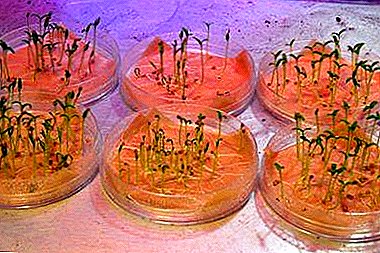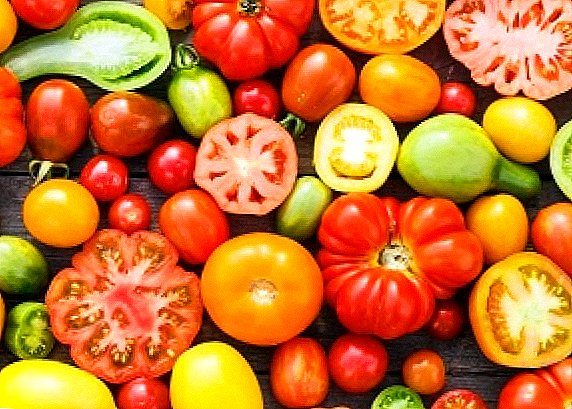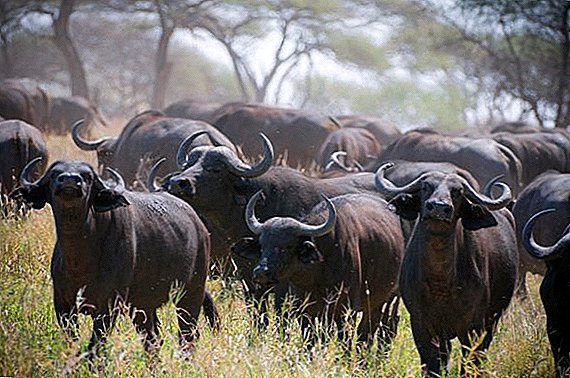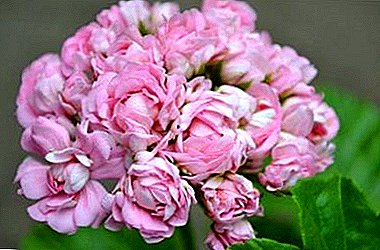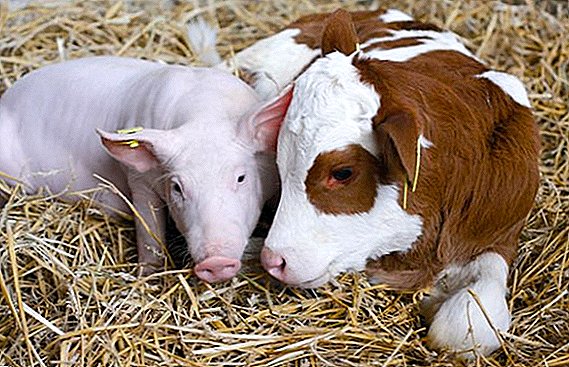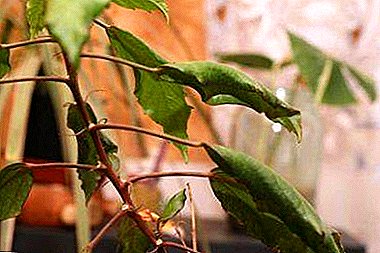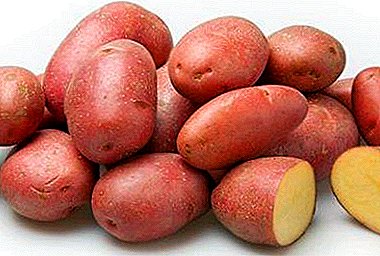
Good taste, productivity, resistance to diseases are the best and demanded qualities of Ryabinushka potato. It is grown not only in Russia, but also in neighboring Eastern European countries.
In our article we will tell you all about the variety Ryabinushka. Here you will find a complete description, will be able to familiarize yourself with the characteristics and fundamentals of agricultural technology, find out how he is prone to certain diseases and is susceptible to attack by insect pests.
Ryabinushka potatoes: variety description
| Grade name | Ryabinushka |
| general characteristics | medium early table variety of Russian breeding |
| Gestation period | 80-90 days |
| Starch content | 11-18% |
| Mass of commercial tubers | 90-130 gr |
| The number of tubers in the bush | 12-15 |
| Yield | up to 400 kg / ha |
| Consumer quality | the pulp does not darken during mechanical damage and cooking, good taste |
| Recumbency | 90% |
| Skin color | red |
| Pulp color | cream |
| Preferred growing regions | North, North-West, Central, Middle Volga |
| Disease resistance | medium to golden nematode, moderately susceptible to late blight |
| Features of growing | sprouting, regular watering and fertilization are recommended before planting to increase yields |
| Originator | CJSC "Vsevolozhskaya breeding station" |
The varietal potato Ryabinushka was bred at the Vsevolzhskaya breeding station in 2007 and belongs to the elite and super elite varieties. Not a hybrid. Medium late variety. Start collecting on the 90th day after landing. High yield. On average, 40 hectares are removed per hectare.
Compare the yield Good luck with other varieties of potatoes can be in the table below:
| Grade name | Yield (kg / ha) |
| Ryabinushka | up to 400 |
| Minerva | up to 430 |
| Kiranda | 110-320 |
| Dolphin | 160-470 |
| Rogneda | 190-350 |
| Granada | up to 600 |
| Magician | up to 400 |
| Lasock | up to 620 |
| Zhuravinka | up to 640 |
| Blue | up to 500 |
| Ryabinushka | up to 400 |
Created for outdoor cultivation. Bush from medium to high. Half-erect and upright. Foliage is dark green, medium-large open type. Edge of medium waviness. Potatoes bloom in purple-blue flowers. Potato oval. Neat and even tubers. Red and smooth skin. Small and very small eyes. The mass of one tuber is from 90 to 135 gr. Creamy flesh does not darken when damaged. Starch in potato tuber contains from 12 to 15%.
The starch content in other potato varieties is presented in the table below:
| Grade name | Starch content |
| Ryabinushka | 11-18% |
| Latona | 16-20% |
| Kamensky | 16-18% |
| Zorachka | 12-14% |
| Impala | 10-14% |
| Spring | 11-15% |
| Arosa | 12-14% |
| Timo | 13-14% |
| Farmer | 9-12% |
| Meteor | 10-16% |
| Juvel | 10-15% |
 Read also interesting materials about various, including medicinal properties of potatoes.
Read also interesting materials about various, including medicinal properties of potatoes.What is dangerous solanine, whether to eat potatoes raw and drink juice, why people eat potato sprouts.
A photo
See below: potato variety ryabinushka photo



The variety's zoning is Russia (Northern, North-Western, Central, Central Black Earth, Middle Volga, Volga-Vyatka, North Caucasus, West Siberian and Far Eastern regions), the Republic of Moldova, the Republic of Belarus, Ukraine.
Technical maturity occurs in 2.5-3 months from the emergence of shoots. It is recommended to sow after legumes, cereals, perennial and annual grasses, flax, lupine, winter crops. Safety up to 90%. Marketability up to 95%.
Features of growing
Are planted after how the earth warmed up to 10 ° C. The classical scheme of planting is 60 cm by 35 cm. Depth is up to 10 cm. The soil is dug up on the bayonet of a shovel. The seam is turned over. Add 3 kg of humus, 100 grams of ash per 1 m².
IMPORTANT! If the soil is clay, planting depth should be reduced to 5.5 cm. Plant in sandy, super-sandy soils to a depth of 11-12 cm. On heavy soils, they are planted in earthen ridges.
 The variety requires regular loosening. For better root ventilation and tuber formation, spend at least two hilling per season.
The variety requires regular loosening. For better root ventilation and tuber formation, spend at least two hilling per season.
Read more about why you need to spud potatoes, how to produce them - by hand or with the help of a walk-behind tractor, whether you can get a good harvest without weeding and hilling.
Watering is best done irrigation method. Mulching - as needed. In the presence of high-quality seed material, proper agricultural technology, fertilization is not required, but information about them may be useful. Read about how to feed potatoes, when and how to apply fertilizers, which ones are the best and why minerals are often needed. And also, how to fertilize potatoes when planting.
Assembled the crop is laid out to dry for one to two weeks. Clean damaged, sick-looking potatoes. Store in a ventilated subfield, box, vegetable pit.
 We have prepared for you a lot of useful information about the storage of potatoes: the timing, temperature, places and problems that arise.
We have prepared for you a lot of useful information about the storage of potatoes: the timing, temperature, places and problems that arise.And also what conditions are created for successful storage in the winter, in vegetable storehouses, in the cellar, in the apartment, on the balcony, in the boxes, in the refrigerator, and what the cleaned root vegetables need.
As for the seed potato Ryabinushka, then for planting:
- Use tubers the size of a chicken egg.
- Tubers are germinated in the light, at a temperature of + 12-15 ° С until sprouts form about one and a half centimeters.
- Spread in trenches depth of 7-10 cm.
- Sprinkled with ashes.
- Covered with a 10-centimeter layer of earth.
- Before planting, for the prevention of disease, soak the tubers in a 1% aqueous solution of boric acid for 20-30 minutes.
Diseases and pests
The variety is resistant to the golden cyst nematode and potato cancer. And also moderately resistant to late blight foliar late blight tuber. Read also all about such common potato diseases as Alternaria, Fusarium, Verticillis, Scab. With regard to pests, the main problems gardeners deliver the Colorado potato beetle and its larvae, potato moth, medvedki, wireworm, aphid.
Tastes, good preservation, the possibility of obtaining high-quality seed material, make the potato variety Ryabinushka promising for cultivation by farmers and amateur vegetable growers.
There are many ways to grow potatoes. We will tell you about the most interesting of them. Read all about modern Dutch technology, the cultivation of early varieties, how to turn it into a business. And also about alternative methods: under straw, in bags, in barrels, in boxes.
We also suggest you to get acquainted with other varieties that have a variety of ripening terms:
| Superstore | Early maturing | Medium early |
| Farmer | Bellarosa | Innovator |
| Minerva | Timo | Pretty boy |
| Kiranda | Spring | American |
| Karatop | Arosa | Crown |
| Juvel | Impala | Manifesto |
| Meteor | Zorachka | Elizabeth |
| Zhukovsky early | Colette | Vega | Riviera | Kamensky | Tiras |



